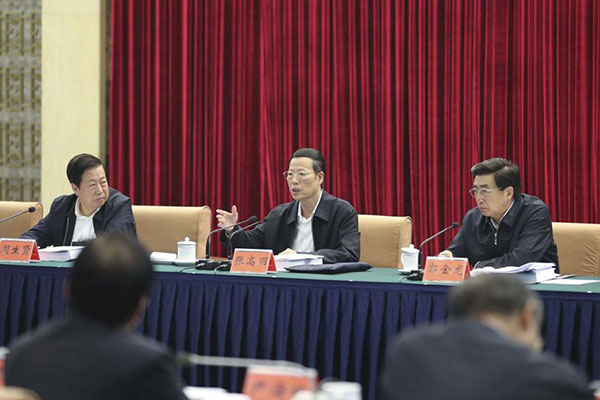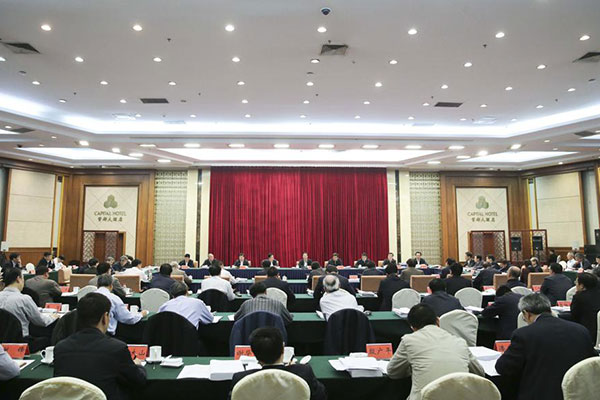
Vice-Premier Zhang Gaoli speaks at a conference on air pollution control in the Beijing-Tianjin-Hebei region and its neighborhood held on Oct 24 in the Chinese capital.[Photo/Xinhua]
BEIJING — As smog enveloped Beijing, Vice-Premier Zhang Gaoli on Oct 24 demanded temporary factory shutdowns and vehicle controls during next month’s APEC meeting to ensure cleaner air.
Ensuring air quality for the meeting in November is the “priority of priorities” for the current air pollution control work, Zhang told a meeting of officials.
His words came as Beijing extended a yellow alert for severe smog and air pollution, with PM2.5 at more than 500 micrograms per cubic meter. The smog is not expected to disperse until the evening of Oct 26.
Noting progress in air pollution control over the past year, Zhang voiced caution against the severe smog still frequent in parts of China.

[Photo/Xinhua]
With temperatures dropping and the coal burning season beginning in northern China, ensuring clean air during the APEC meeting will be “tremendous pressure and challenge,” he said. Local authorities must ensure that high-polluting enterprises — such as power, construction, steel making, petrochemicals and coking — in Beijing and its neighborhood are suspended or reduced, and construction work halted.
Vehicle controls must be strictly enforced and residents should be encouraged to take public transportation, he added.
Emergency measures should be launched in cases of extreme weather, and the illegal discharge of pollutants must be dealt with resolutely, the vice premier said.
Air pollution control in the notoriously smoggy Beijing-Tianjin-Hebei region this winter and spring next year is a top priority, and authorities must take measures to cut pollution as a result of coal burning.
He called on authorities to take more high-emission vehicles off the road, stop farmers burning straw, limit pyrotechnics and improve monitoring and emergency response mechanisms.
China has a four-tier color-coded weather warning system, with red representing the most severe warning, followed by orange, yellow and blue.
